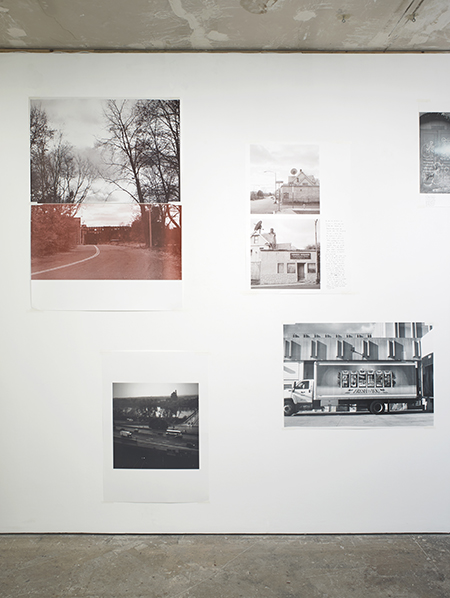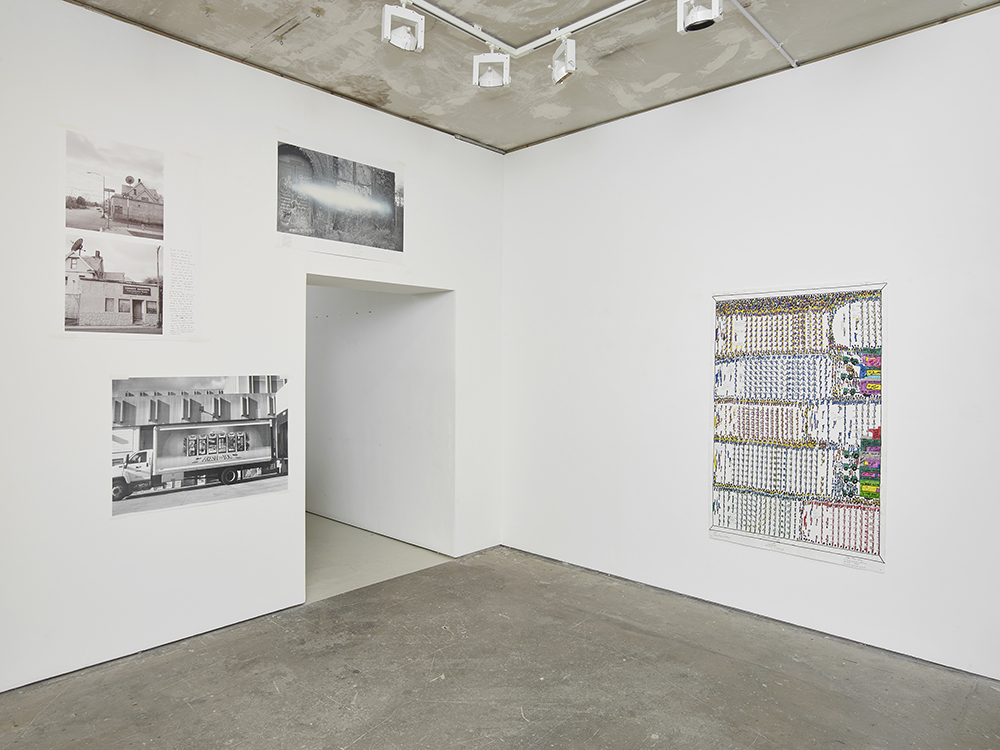Jeremiah Day’s practice focuses on moments of memory or resistance, often interweaving stories from his family and friends or local realities with geopolitical tensions and historical incident. His dynamic performance style sees him crawling, running, dancing, falling and singing, relaying his thoughts and opinions and recollecting personal anecdotes. Although many of his works were created as performances, they are also conceived to stand alone without their accompanying live elements, with photographs, texts, handwritten notes and objects leaving traces of actions and ideas. Day has been researching the movement of the people of the Blasket Islands off the Dingle Peninsula (Ireland), to the town of Springfield near Boston (USA) culminating in a complete evacuation of the Islands in the 1950s.
What we know of the poetic tradition of the Blasket Islands comes to us largely through the efforts of the English linguist George Thompson. In the story-telling of the Blaskets, Thompson felt he’d found a link with the pre-Socratic tradition of Greek epic poetry, where spiritual, personal, political and practical subjects were integrated, and thus the boundary between art and life could be said not to exist at all.
Springfield has been largely in decline for fifty years now, a classic post-industrial American city. Can we imagine that any of the story-telling traditions of the Blaskets have lived on, there? And though the Blaskets are long deserted, what of the now developed Ireland around them? What does progress mean, from the lens of the Blasket tradition?
Exhibition text excerpt: Jeremiah Day & Simone Forti “News Animations / No Words For You, Springfield” Project Arts Centre, Dublin, 2008
Dapper Bruce Lafitte grew up in the Lafitte Housing Development in the 6th Ward of New Orleans. This community has inspired his art so much that he has taken the name Dapper Bruce Lafitte to acknowledge its impact on his life. This inspiration is also apparent when you view Bruce’s vibrantly detailed drawings chronicling his life in New Orleans. While Bruce is not shy about tackling the gritty subjects of poverty and racism, his art also documents the joyful parts of his life in the city.
Dapper Bruce Lafitte is an artist whose work is capable of breaking down the partition which separates folk art from fine art once and for all. These are big issues: how we define and reduce our culture through effective catch phrases and ineffective oppositions like fine versus folk, outsider versus insider, trained versus self-taught or vernacular. All these characterizations ring hollow today. They are fraught with the prejudices and contradictions of class and racial manipulation, no less so when they are deployed in the study of the liberal humanities. Lafitte escapes these confines in several ways. Through his connection to the street, public art and community rebuilding, he has focused on his local sub-cultures and folk-cultures, with the mind of a contemporary urbanist.
His visual dynamics recall both Futurist and Russian Suprematist ideas of movement, crowds as movements. Like Busby Berkeley, Eisenstein, or socialist stadium spectacles, Lafitte renders a public in motion, a processional choreography defined by the streets, and thus an art of the streets, though not street art per se. The art world still struggles to define such phenomena. Born of a confluence of military marching forms and ancient religious processions, the parade form itself is rooted in the structure and image of the river, its forward flow, its bends and banks, just as it is reflected in the arterial systems on which both cities and human bodies rely. In depicting these resonant forms, Lafitte’s drawings illustrate human columns and patterns in the flows of power, transport, communication, revelry and rivalry.
Excerpt from Erin McNutt, “Dapper Bruce Lafitte and the Grittier Side of Art”, New Orleans Canvas Magazine, 04.03.2018
One of the issues in Day’s No Words For You, Springfield the absence of a poetic vision, a loss of ‘story’ – to reflect upon and deal with the world, the absence of a public culture. The piece seeks to portray that absence – to tell the story of no story. While Day’s project abstracts this absence, Lafitte’s work is right in the middle of it. He has grappled with the landscape of his hometown and hurricane Katrina – the epic, now almost mythological event of massive public trauma and loss that has still never really been dealt with culturally or politically. The repetition and figuration in Lafitte’s work – classic themes of what might be called ‘outsider art’, or rather art that emerges from outside the ‘art-world’ – bring it closer to a potential meaning for a broader public so that he might be considered as a kind of parallel figure to the Blasket Storyteller. (What ‘art-world’ artist has tried to deal with Katrina, one must ask?)
Day and Lafitte both employ images and text with an urgency to communicate. Amiri Baraka has argued that modern art is abstract because if you showed the people how the world works they would be able to change it, they would burn parts of it down. Both Lafitte and Day’s work aim for a public description, and share the assumption that such a description matters.

Dapper Bruce Lafitte
T.D.B.C. Presents Walking From New Orleans
2017
archival ink on acid free paper
45.7 x 61 cm

Dapper Bruce Lafitte
T.D.B.C. Presents Walking From New Orleans (detail)


Jeremiah Day
No Words For You, Springfield
2008
a series of duotone handmade offset lithographs
each 100 x 70 cm

Jeremiah Day
No Words For You, Springfield

Jeremiah Day
No Words For You, Springfield (detail)

Jeremiah Day
No Words For You, Springfield
2008
a series of duotone handmade offset lithographs
each 100 x 70 cm

Jeremiah Day
No Words For You, Springfield

Jeremiah Day
No Words For You, Springfield (detail)

Jeremiah Day
No Words For You, Springfield

Jeremiah Day
No Words For You, Springfield

Jeremiah Day
No Words For You, Springfield


Jeremiah Day
No Words For You, Springfield

Jeremiah Day
No Words For You, Springfield (detail)

Dapper Bruce Lafitte
T.D.B.C Presents City Stage
2018
archival ink on acid free paper
152 x 101.5 cm

Dapper Bruce Lafitte
T.D.B.C Presents City Stage (detail)

Dapper Bruce Lafitte
T.D.B.C Presents City Stage (detail)

Dapper Bruce Lafitte
T.D.B.C Presents City Stage (detail)

Dapper Bruce Lafitte
T.D.B.C Presents City Stage
2018
archival ink on acid free paper
152 x 101.5 cm